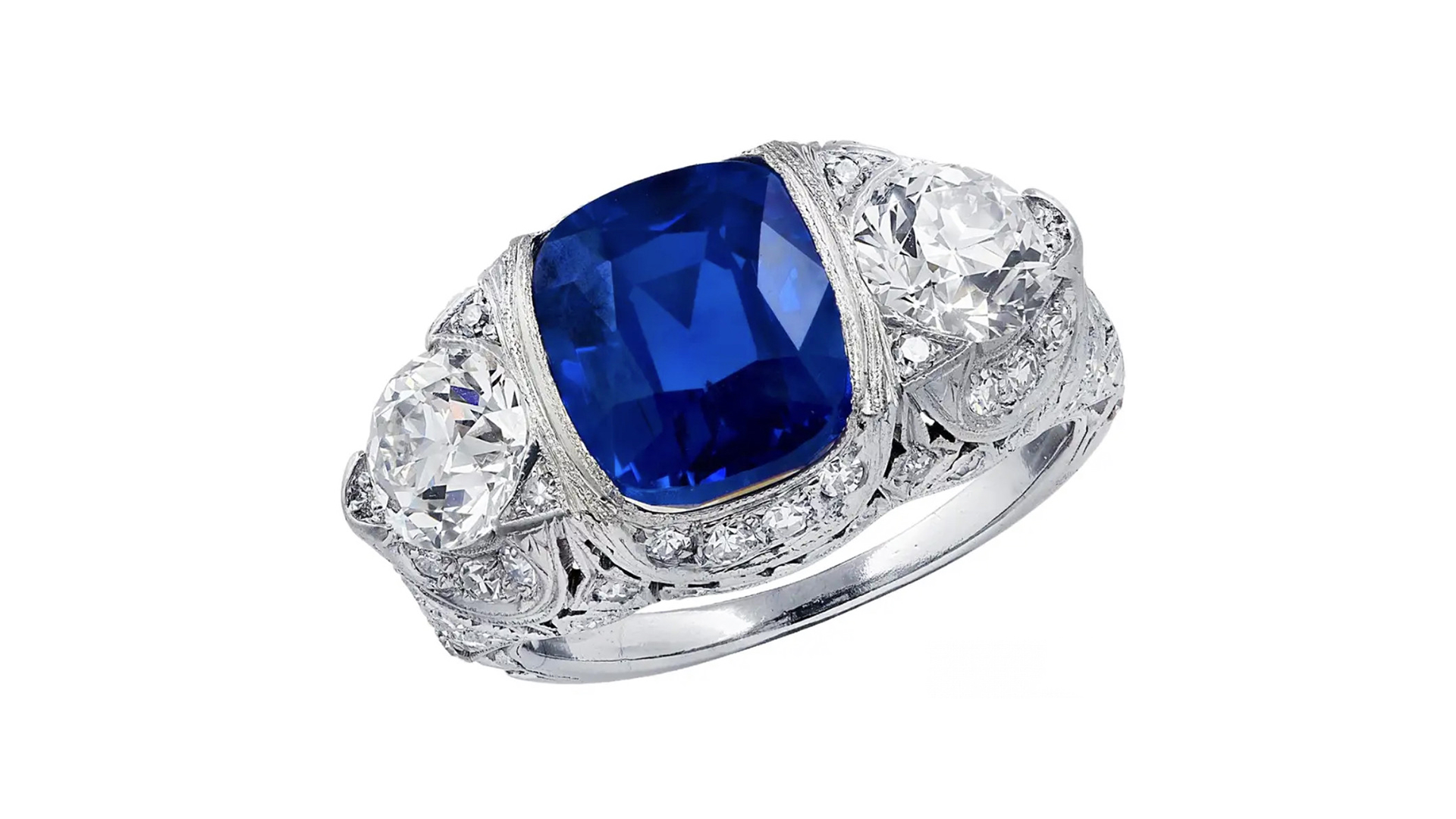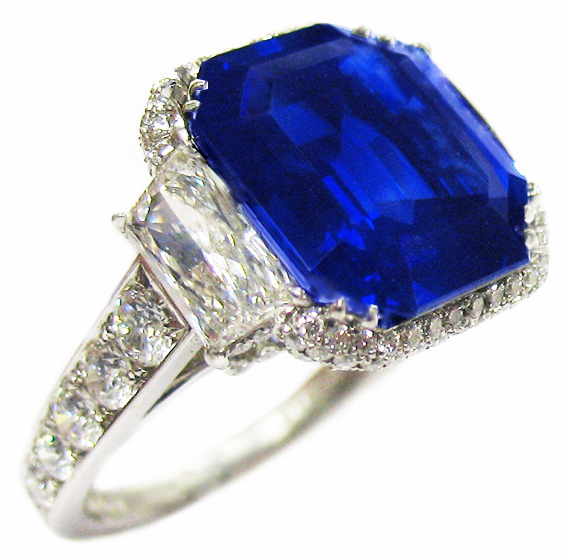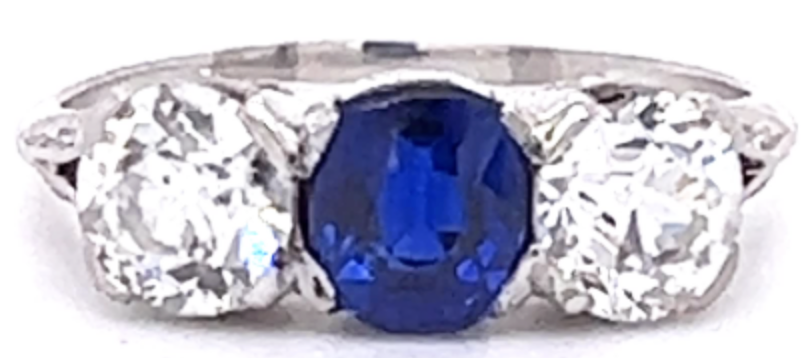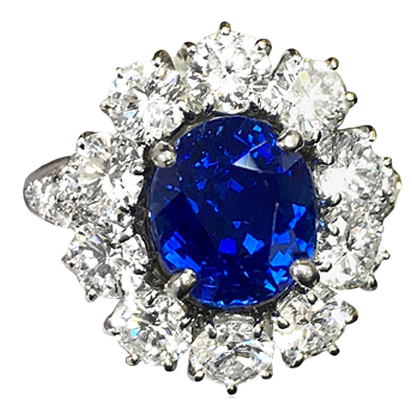Deep within the Himalayan mountains of Kashmir, in a valley in the Zanskar range was a hidden treasure that was only discovered after a landslide revealed an area of pegmatitic rock dotted with blue crystals. These blue crystals turned out to be sapphires that would come to be known as some of the most superb in the world and a true collectors gem. Fine Kashmir sapphires are known for commanding premium prices and a gem from that region can be significantly pricier than a blue sapphire from another country.
“Kashmir sapphires are an incredible deep blue,” explains Alan Levy, J.&S.S. DeYoung. “Like any gemstone there are different qualities, but the top end is a beautiful intense saturated blue color. It’s the color that makes a Kashmir sapphire special.”
The very phrase “Kashmir Sapphire” conjures up visions of Maharajahs — who were regional rulers in India — draped in spectacular jewels. While this is no longer the case, the mystique of these precious gems continues, even though the original find was in 1881 and the mines are long since depleted. When the blue crystals were first revealed as sapphires, they were plucked from their resting place by locals. It took about a year for the sapphires to make it to major cities in India, including Delhi. It also didn’t take long for the Maharajah of Kashmir to decide that this new found source of wealth should be guarded and he sent his military to patrol the mines.
Kashmir Sapphire Mines
The mines sit in very harsh terrain. They are about two miles up the mountains in an extremely remote and dangerous area, the mines are accessible by narrow, rocky trails and rickety wooden bridges high above rushing rivers. In the winter the air is frigid and as much as 30 feet of snow can fall during the season. But in the summer, the mines are accessible and between 1881 and 1887 the warm weather months were used to extract sapphires. By 1888 the mine was tapped out, which is another reason why these gems are so coveted — there is no new material. Kashmir sapphire that you find today is mostly in antique jewelry, or they have been recycled and reused in a contemporary setting, either way the material was mined some 100 years ago.
India was under British rule during the late 1800s, so when the mines dried up, the Maharajah of Kashmir asked the British/India government for help locating a new source of sapphires. In 1887 geologist T.D. LaTouche went to Kashmir to survey the area, where he found the original mine depleted. He then found another mine, which was active from 1889 until 1905 when it ran out of gems. No other mines have been discovered in the area since that time. While the mine closed in 1905, there was still some material coming out of Kashmir, but that halted around 1929 to 1930.
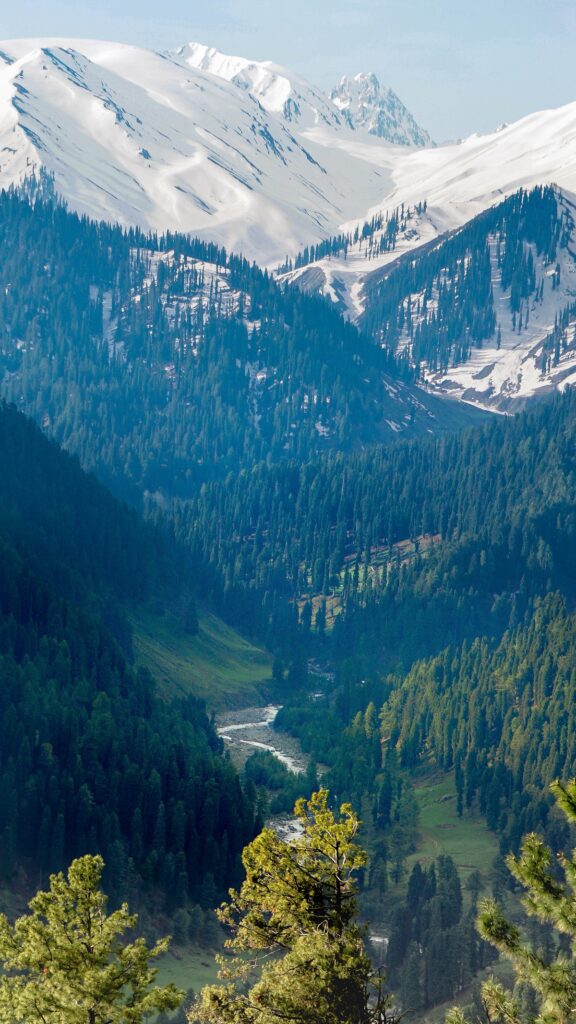
Kashmir Sapphire Silk
So what exactly is it that makes a Kashmir sapphire so magical? A number of characteristics contribute to its legendary beauty. Sapphire is part of the corundum mineral family and is made up of aluminum and oxygen. The blue color comes from trace elements of iron and titanium. Iron will make the stone bluer. Kashmir sapphires tend to have a little more iron, which is what causes the pure blue color that makes the gems so desirable.
Now, let’s talk about inclusions. Generally, you don’t want inclusions in gemstones, but in the case of Kashmir sapphires inclusions actually improve the value of the stone. Kashmir sapphires have inclusions known as “silk”. The silk is actually made up of microscopic rutile threads, which reflect light and scatter it throughout the stone giving the gem a more vibrant color and a particular glow. Silk is what gives Kashmir sapphires their special velvety look. Inclusions are also important as they are indicators of origin and Kashmir sapphires have a specific type of inclusion.
“Kashmir sapphires have a particular type of inclusion,” notes Kathryn Bonanno, Kathryn Bonanno, PG FGA Inc . “It looks kind of like an elongated comma. This is not an inclusion that will be found in sapphires from other places. Also, the silk in Kashmir sapphires is very fine, it’s not in bands.”
Buying a Kashmir Sapphire
If you’re considering purchasing a Kashmir sapphire, there are a couple of things to consider, according to Sanjay Chorida, Jardin Jewels, once you have inspected the color and clarity of the gem, he suggests checking that the paperwork is in order. “Make sure the Kashmir sapphire has proper reports, preferably from AGL, SSEF and Gübelin,” advises Chorida. “I prefer to have all three. Sometimes a lab will say a gem is of Kashmir origin and another lab will say it’s not. The stakes are high, the price for a Kashmir sapphire can be ten times higher than for sapphires from somewhere else. If you go back over the past years, you will see that Kashmir sapphire prices have gone up considerably.”
If you want to add a Kashmir sapphire to your collection, you’ll have to be patient these gems are rare and consequently hard to find. You’ll also need to make sure that you’re working with a reputable dealer and that the stone has the proper reports from gemological laboratories verifying its origins.
Featured image (top of page): Art Deco platinum ring showcases a 5-carat plus, unheated Kashmir sapphire with diamond side stones and accents. The sapphire is accompanied by reports from AGL, SSEF and Gübelin stating that the sapphire is of Kashmir origin, courtesy Jardin Jewels (@jardinjewels).
Authored by Amber Michelle
